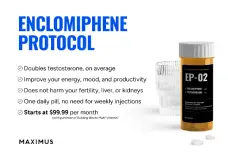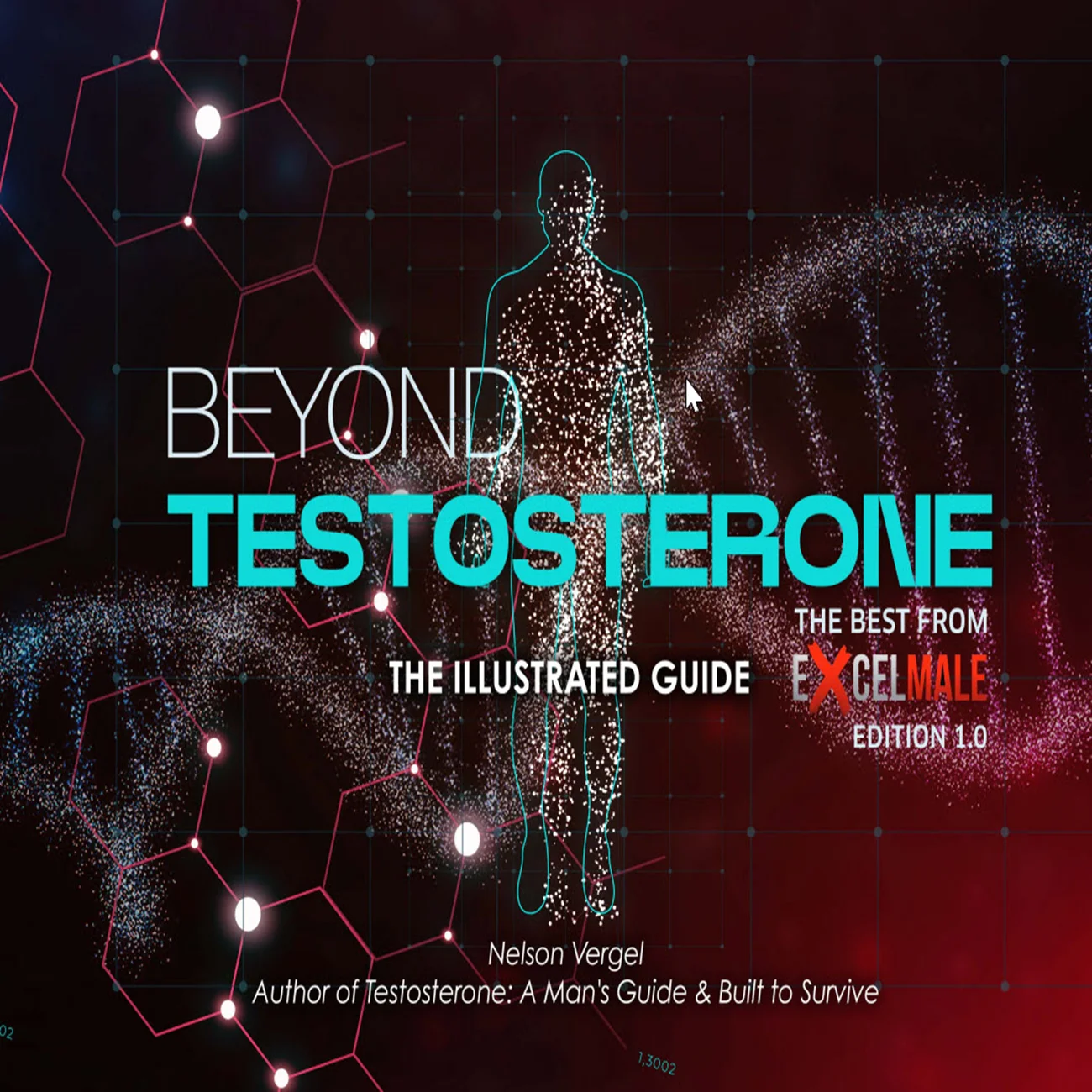On recent labs, my doctor noted my IGF-1 was on the low end, 105ng/mL (range 88-246).
He added 350 micrograms of ipamorelin per day to my current protocol, injected before bed every night. I've been trying to do a bit of research on ipamorelin, its efficacy and safety, but have come up short. There is not a lot out there on Youtube, etc.
Is anyone out there using this? What are your thoughts on it? Is it worth it or a waste of money?

Based on the search results, here are the key points about Ipamorelin dosage:
1. Typical dosage range:
- 100-300 mcg per injection[1][4][6]
- Administered 1-3 times daily[1][4][6]
2. Common dosing protocols:
- 200-300 mcg total daily dose, split into 2-3 injections[6]
- 300 mcg per day, typically administered before bed[7][8]
3. Dosing frequency:
- Daily or 5 times per week[4][8]
- Often taken at night to mimic natural growth hormone release[7][8]
4. Duration of use:
- Cycles typically last 8-12 weeks[5]
- Followed by a 4-8 week break period[5]
5. Administration:
- Given via subcutaneous injection[1][6]
- Taken on an empty stomach, at least 30-60 minutes before or after eating[1][4]
6. Personalization:
- Dosage may need to be adjusted based on individual factors like age, weight, and goals[4][5]
- It's recommended to start with a lower dose and increase gradually if needed[5]
7. Medical supervision:
- Consultation with a healthcare provider is crucial to determine the appropriate dosage[4][5]
8. Combination use:
- Often combined with CJC-1295 for synergistic effects[7]
- When combined, a typical dose might be 500 mcg Ipamorelin with 250 mcg CJC-1295[7]
It's important to note that Ipamorelin is not FDA-approved for human use, and these dosages are based on research and anecdotal reports. Always consult with a qualified healthcare professional before using any peptides.

Citations:
[1] Ipamorelin
[2] Understanding the Correct Dosage of Ipamorelin for Optimal Health Benefits
[3] Ipamorelin Overview, Dosage, and Risks — peptidesinstitute.org
[4] How Much cjc-1295 Ipamorelin Should I Take Explained by Tulsi
[5] Ipamorelin CJC 1295: Ideal Dosage for Fitness - Anti-Aging Northwest
[6] Ipamorelin Dosage Calculator and Chart | A-Z Guide
[7] Ipamorelin/CJC1295
[8] SERMORELIN/IPAMORELIN - Houston Men's Health Clinic
He added 350 micrograms of ipamorelin per day to my current protocol, injected before bed every night. I've been trying to do a bit of research on ipamorelin, its efficacy and safety, but have come up short. There is not a lot out there on Youtube, etc.
Is anyone out there using this? What are your thoughts on it? Is it worth it or a waste of money?
Based on the search results, here are the key points about Ipamorelin dosage:
1. Typical dosage range:
- 100-300 mcg per injection[1][4][6]
- Administered 1-3 times daily[1][4][6]
2. Common dosing protocols:
- 200-300 mcg total daily dose, split into 2-3 injections[6]
- 300 mcg per day, typically administered before bed[7][8]
3. Dosing frequency:
- Daily or 5 times per week[4][8]
- Often taken at night to mimic natural growth hormone release[7][8]
4. Duration of use:
- Cycles typically last 8-12 weeks[5]
- Followed by a 4-8 week break period[5]
5. Administration:
- Given via subcutaneous injection[1][6]
- Taken on an empty stomach, at least 30-60 minutes before or after eating[1][4]
6. Personalization:
- Dosage may need to be adjusted based on individual factors like age, weight, and goals[4][5]
- It's recommended to start with a lower dose and increase gradually if needed[5]
7. Medical supervision:
- Consultation with a healthcare provider is crucial to determine the appropriate dosage[4][5]
8. Combination use:
- Often combined with CJC-1295 for synergistic effects[7]
- When combined, a typical dose might be 500 mcg Ipamorelin with 250 mcg CJC-1295[7]
It's important to note that Ipamorelin is not FDA-approved for human use, and these dosages are based on research and anecdotal reports. Always consult with a qualified healthcare professional before using any peptides.
Ipamorelin: A Detailed Briefing Document
Introduction:
Ipamorelin is a growth hormone secretagogue (GHS) that functions as a ghrelin analog. It stimulates the pituitary gland to produce and release growth hormone (GH) while simultaneously inhibiting somatostatin, leading to a more stable and natural release of GH. Unlike some other GHRPs, Ipamorelin is noted for not significantly increasing hunger, cortisol, or prolactin. It is commonly used off-label for age-management, body composition changes (reducing fat, increasing lean mass), and improving overall quality of life.Key Themes and Important Information:
1. Mechanism of Action:
- Ipamorelin acts as a "Ghrelin agonist," binding to receptors in the brain and pituitary cells.
- "Not only does it stimulate the pituitary gland to release growth hormone, it also inhibits the release of somatostatin." This dual action contributes to a "more steady slow release of growth hormone" that "mimics the natural release of GH."
- "In laboratory studies it is shown that Ipamorelin has a more stable release of GH than most other GHRPs."
2. Dosage and Administration:
- Typical Dosage Range: 100-300 mcg per injection, administered 1-3 times daily.
- Common Protocols: 200-300 mcg total daily dose split into 2-3 injections, or 300 mcg per day, often before bed.
- Frequency: Daily or 5 times per week. Taking it at night is common to mimic natural GH release.
- Duration: Cycles typically last 8-12 weeks, followed by a 4-8 week break period. For age-management/wellness, it can be taken chronically at 250-500 mcg qhs (every night at bedtime).
- Administration Method: Subcutaneous injection.
- Timing: "Taken on an empty stomach, at least 30-60 minutes before or after eating."
- Personalization: Dosage may be adjusted based on individual factors like age, weight, and goals. It's recommended to "start with a lower dose and increase gradually if needed."
- Medical Supervision: "Consultation with a healthcare provider is crucial to determine the appropriate dosage."
- Availability: Available as a lyophilized powder for subcutaneous injection (must be reconstituted). Common concentrations from compounding pharmacies are 6mg and 15mg vials. A 15mg vial can provide 50 doses of 300 micrograms.
3. Therapeutic Uses (Off-label):
- Age Management: "Most commonly used in aging patients and/or patients who are undergoing body composition changes including loss of body fat." It aims to "reverse age-related, maladaptive changes in body composition such as reduced lean body mass (muscle), increased total and visceral fat, and decreased bone mass."
- Body Composition: Used to "improve lean mass and decrease fat." Anecdotal reports confirm "fat loss and muscle fullness" and "increased my lifts."
- Physical Performance & Recovery: Reported to "increase physical performance." One user noted it "Allows me to train like a beast."
- Sleep Quality: "Reported to... benefit sleep." Users have experienced "Great sleep" with Ipamorelin.
- Bone and Connective Tissue Health: "In laboratory studies it is shown that Ipamorelin has the ability to strengthen connective tissue and joints, bone strength, and metabolism."
- Immune System: "It has also shown to possibly have a positive influence on the immune system."
- Patient Types: Suitable for "Elderly patients who may not have optimal pituitary function due to aging; younger patients who can optimize hGH output; Patients on a weight-management program; patients requiring long term chronic treatment of GH."
4. Benefits (Advantages over other GH secretagogues):
- IGF-1 Efficacy: "Appears to be more effective than Sermorelin at increasing IGF-1."
- Appetite Control: "Does not increase hunger unlike other ghrelin peptides." This is a notable advantage compared to Ibutamoren (MK-677), which can increase appetite.
- Cortisol and Prolactin: "Reduced risk of increasing cortisol and prolactin unlike other ghrelin peptides." High cortisol can lead to water and fat gain.
- Endogenous GH Production: "It does not shut down endogenous GH production upon cessation, unlike Sermorelin" or exogenous GH. This makes it a more favorable option for long-term use.
- Physician Prescription: "Commonly prescribed by physicians who report positive outcomes in patients who want to lose weight and/or who do not respond adequately to Sermorelin."
- Safety in Elderly: "Safe and effective in elderly patients who have decreased hGH production."
5. Potential Negatives/Side Effects:
- While "few side effects have been reported," anecdotal mentions include:
- "Headache/lightheadedness"
- "Water retention" (especially at higher doses, e.g., 2 mg/day)
- "Numbness in extremities"
- "Tiredness"
- "Decreased Insulin sensitivity"
- "Carpal tunnel symptoms"
- These side effects are "undoubtedly related to excessive hGH exposure and thus, dosage should be reduced."
- Regulatory Status: "Ipamorelin is not FDA-approved for human use, and these dosages are based on research and anecdotal reports." Tesamorelin and Sermorelin are FDA-approved.
6. Combination Use:
- Often "combined with CJC-1295 for synergistic effects."
- "When combined, a typical dose might be 500 mcg Ipamorelin with 250 mcg CJC-1295."
7. Comparison with other GH Secretagogues (Sermorelin, Ibutamoren/MK-677, Tesamorelin):
- Sermorelin: Ipamorelin is generally considered "more effective... at increasing IGF-1" and "does not shut down endogenous GH production upon cessation, unlike Sermorelin."
- Ibutamoren (MK-677): Ibutamoren is an oral option with a 24-hour half-life, which is convenient. However, it is often associated with increased hunger and water retention, which Ipamorelin generally avoids. While Ibutamoren can increase cortisol (which may help with joint pain), high levels can lead to water and fat gain.
- Tesamorelin: FDA-approved for decreasing HIV-related abdominal fat. No direct head-to-head comparison data with Ipamorelin is available regarding general GH-boosting effects. Its accessibility and price point compared to Ipamorelin may influence choice.
Conclusion:
Ipamorelin presents itself as a promising growth hormone secretagogue with several advantages, particularly its ability to provide a natural and steady GH release without significantly impacting hunger, cortisol, or prolactin, and without suppressing endogenous GH production upon cessation. While widely used for anti-aging, body composition improvements, and enhanced quality of life, it is crucial to remember its off-label status and the importance of medical supervision due to the anecdotal nature of some reported benefits and side effects. Individual responses can vary, and careful dose titration is advised to minimize potential negatives like water retention.Citations:
[1] Ipamorelin
[2] Understanding the Correct Dosage of Ipamorelin for Optimal Health Benefits
[3] Ipamorelin Overview, Dosage, and Risks — peptidesinstitute.org
[4] How Much cjc-1295 Ipamorelin Should I Take Explained by Tulsi
[5] Ipamorelin CJC 1295: Ideal Dosage for Fitness - Anti-Aging Northwest
[6] Ipamorelin Dosage Calculator and Chart | A-Z Guide
[7] Ipamorelin/CJC1295
[8] SERMORELIN/IPAMORELIN - Houston Men's Health Clinic
Last edited by a moderator:












